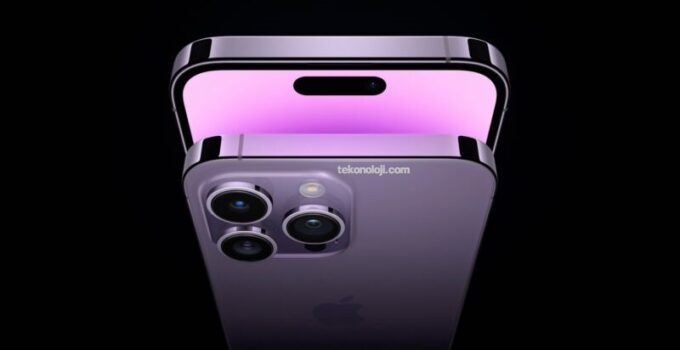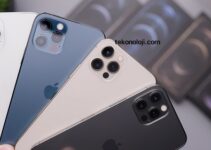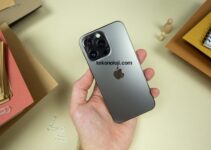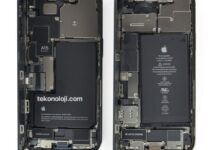iPhone 14 Pro review. The iPhone 13 Pro did not need to be replaced with something different and Apple did not: iPhone 14 Pro is a step forward that improves what can be improved but does not change anything. At the same time, however, it sets the conditions for ideas with great potential, so dismissing it as a simple retouching of the previous model would be wrong.
Downloads from the Play Store and App Store are down
The body does not change, the face does
Leaving aside the new purple color (very nice in our opinion), iPhone 14 Pro looks like a phone extremely similar to iPhone 13 Pro. The design, the materials that give rise to what we could define the look and feel substantially say so. identical.
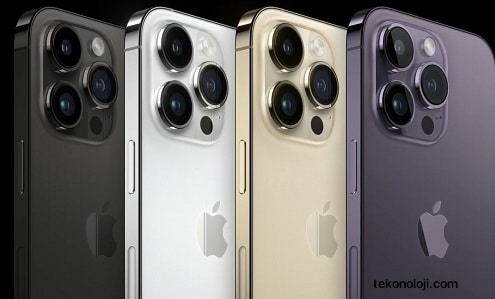
Like the previous model, iPhone 14 Pro is an elegant and essential phone made of the same materials, therefore in steel and glass, with cutting edges and an all-screen front. The dimensions are what we need in our opinion: the 6.1 inches of the iPhone 14 Pro, the same as the iPhone 12 Pro and iPhone 13 Pro, represent the balance point of a device that is not small and not too large and with a perfect ergonomic shape.
iPhone 14 Pro is thus the right phone to surf, to watch movies, to take advantage of the functions of the applications. And even if it is not light (205 grams, more than iPhone 12 and iPhone 13) it does not break through your pockets and, above all, fits in your pocket.
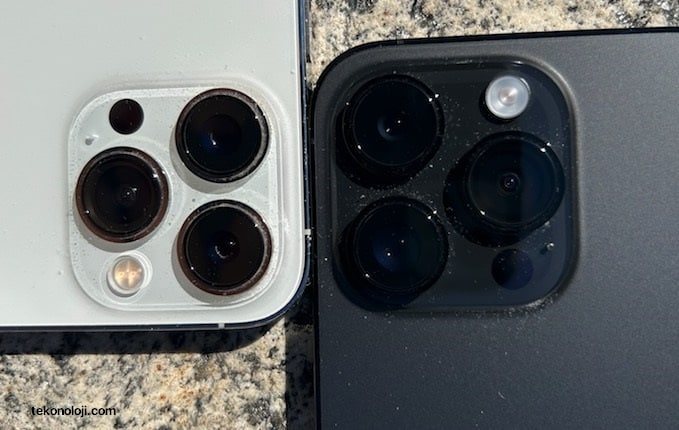
Although this is just our point of view, we see no reason to choose the 6.7-inch iPhone 14 Pro Max which has the only advantage of a larger screen but offers the same power, the same functions, but with the same disadvantage of being less manageable in everyday life.
However, some news emerges if you look at the back, even without an iPhone 13 Pro under hand to compare. In particular, the lenses are evidently more protruding and larger. The relief on which the lenses are mounted is always there (no back that slips off as had been assumed) and for the third time in three years it has grown in size, because, in fact, the diameter of the lenses has grown.
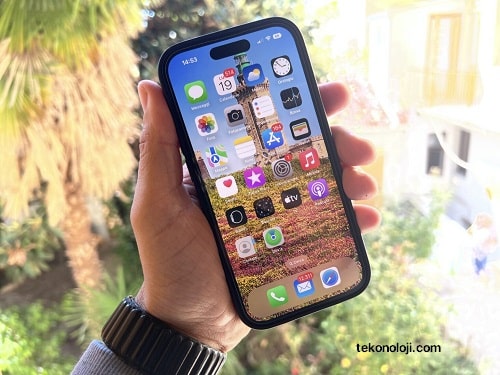
But if in the end things change on the back but only a little, what changes and a lot is the face of the phone, or just where nothing had ever changed since the launch of the iPhone X. In fact, it is here that we find one of those ideas from Apple that promise to transform a part of the future of the iPhone: the new notch or, better, Dynamic Island.
Let’s talk about that brilliant idea of those who invented this mix of software and hardware in the rooms of Cupertino that makes an ugly thing, the “point and oval” hole, something that fascinates, an almost alive being, a mutant blob that gives a new identity and a new aesthetic to the iPhone 14 Pro.
The screen
Speaking of display, the quality remains the indisputable one of the iPhone 13 Pro. The new iPhone 14 Pro indeed improve the previous ones.
The panel with ProMotion technology (the name Apple uses for adaptive frequency displays up to 120Hz) now has a peak brightness of 1,600 nits against the 1,200 nits of the iPhone 13 Pro (which is 2,000 nits in bright sunlight). If the technical data is not very explanatory to the ear of the inexperienced, perhaps an “iPhone 14 Pro is frighteningly bright” will be more so. It is difficult if not impossible to find a situation where the screen is not perfectly readable.
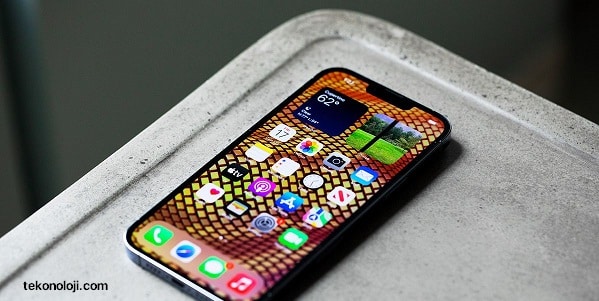
In the past there are those who, using technical tools, have defined iPhone screens as the best smartphone screens in the world. We, relying only on our eyes, confirm: we have never seen better displays than that of the iPhone 14 Pro.
Seeing a movie on the iPhone is extremely realistic, so that works like Dune, Blade Runner 2049, The Jocker played entirely on very particular colors, shadows, reflections and dominants are extraordinary. Were it not for the size, the aspiration would be to use the iPhone 14 Pro instead of a television screen for home cinema. A feeling accentuated by the audio, very powerful and of high quality with excellent channel separation.
Always on screen
In addition to screen quality, the second thing to take note of when it comes to the screen is the always-on display. In practice, with the iPhone 14 Pro the screen never goes completely black. We are also here hearing a rumor “Android has been doing this for years”. True, but iPhone does something more: when the system goes to rest we continue to have the desktop background with date, time and notifications. The variable refresh display drops to 1Hz from 120Hz to save battery.
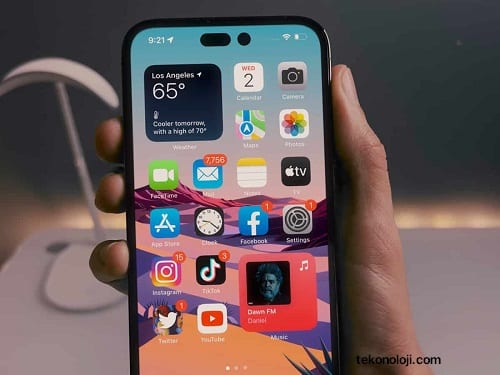
Another battery is spared by the intelligence of the system which completely turns off the display when we could not see it anyway; the conditions are many; by way of example, this happens when the iPhone is in a pocket or drawer, or when we have connected it to CarPlay. iPhone turns off completely even if we walk away wearing an Apple Watch paired with it.
Consumption? Let’s admit that we have not operated the iPhone 14 Pro long enough in everyday life to say whether or not the tricks put in place by Apple are sufficient to make the function acceptable in terms of cutting autonomy. It is certain that an iPhone 14 Pro with the screen always on consumes more than an iPhone 14 Pro with this function disabled.
However, we also think that there are many variables to take into account and that could affect even more than the simple screen always on: from the number of times the display is accessed entirely for the arrival of a notification, to the brightness of the desktop background, the ambient light, then the location in relation to the cellular network and access to Wi-Fi. This makes it very difficult to establish how much and for whom the always-on screen represents a real problem in terms of autonomy.
The utility? Having lived without a screen that is always on for about fifteen years, we would say that we did not particularly feel the need for this function. This is why we have turned it off. We could retrace our steps when Apple will come up with some good ideas that take advantage of the always-on display of the iPhone 14 Pro in such a way as to make it truly indispensable.
Dynamic Island
A speech that starts from similar considerations, but ends with a scenario that appears much broader and more promising is the one concerning Dynamic Island. We would not stay here to repeat to you what we are talking about and what it does because we have mentioned it above and now have detailed it in many articles, with an abundance of opinions. In summary, it is a software trick that transforms into an “on-board” display one that, like that of the iPhone, is not.
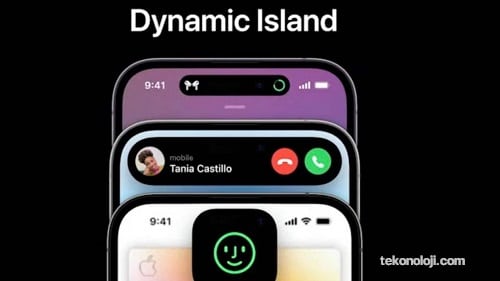
The operating system draws a sort of second screen using the pixels surrounding the True Depth camera and the front camera and with it shows notifications from the apps and allows you to interact with them. The round and oval holes are thus masked, which have taken the place of the black carving of all previous iPhones. And in normal light conditions the trick works perfectly.
How does Dynamic Island work?
But the most amazing trick was to invent the idea of Dynamic Island. Basically this would just be a good idea to mask a disharmonious piece of hardware. But Apple has taken advantage of this need to create something useful and potentially revolutionary, an interactive widget that integrates with the interface.
Dynamic Island signals the operation of an app, but also allows you to recall it with a touch while with another prolonged touch the widget expands and shows, for example, the controls of the music player or the directions of a GPS route.
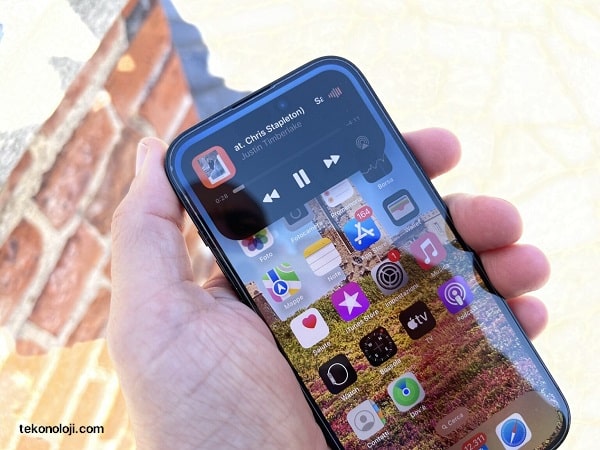
The programs currently exploiting Dynamic Island are few; even the operating system still makes only a small use of it. But if it is quite clear that we are facing a work in progress, the potential is enormous. To develop it, however, will require the commitment and ingenuity of the developers to whom the APIs have been opened.
It will be the applications that will be able to exploit it for short communications, live notifications and some quick interaction operations, to give the possibility to iPhone 14 Pro to become something different compared to all devices that are without Dynamic Island and that the Android world, not surprisingly, he is already rushing to imitate.
Already at the moment, in any case, Dynamic Island represents one of the major innovations and strengths of the iPhone 14 Pro compared to everything else that came before. The not yet certainly old iPhone 13 Pro, when compared, looks like something from a previous generation, a more passive system and its interface static and even tired.
The camera
After the always-on screen and Dynamic Island, here is the third pillar of the iPhone 14 Pro, the generational leap of the camera. Apple has not changed the resolution of the main camera (which is finally called this year for Apple as well) since 2015 with the transition from iPhone 6 to iPhone 6s. iPhone 13 Pro had a 12MP camera, now iPhone 14 Pro has a 48MP camera.
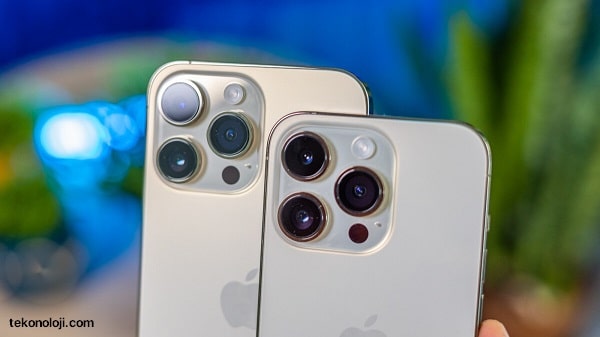
The technique
However, the increase in the resolution of the iPhone 14 Pro is not all you need to know about this step, on the contrary, starting from this alone runs the risk of being misleading. Apple has in fact increased the size of the sensor (by 96% compared to that of the iPhone 13 Pro) and quadrupled the number of pixels (reducing the distance from each other), but in the end the shots are always 12 megapixels.
We are in fact faced with a sensor with a Quad Bayer structure which, using the so-called pixel binning, makes four pixels work as if they were a single, much larger one. The result is that the iPhone 14 Pro, Apple says, is capable of capturing more light than its predecessor. All this despite, perhaps for reasons of sensor size, the aperture of the main camera is smaller than that of the iPhone 13 Pro.
Photonic Engine
In addition to the new sensor at work behind the iPhone 14 Pro’s cameras, there is also the Photonic Engine. It is an action performed by the image sensor that merges the best parts of six frames of the same photo in a single shot, increasing detail and overall quality. This is essentially an updated version of Deep Fusion but with a difference: the frames are now those captured natively by the sensor, before corrections are made. This determines an improvement of detail, color, exposure especially in low light conditions
The result on the main camera
Apple says that thanks to the integration of new hardware and new software, iPhone shoots twice as better in low light with the main camera and three times better with the ultrawide camera. Putting aside the question mark about what this statement scientifically means, the question to answer is does iPhone 14 Pro really improve iPhone 13 Pro shooting?
If we put aside technical specifications and detailed analyzes that we leave to others and that we await with curiosity, and we limit ourselves to talking about the general use that is made of the iPhone as a camera, the answer is “no”: iPhone 14 Pro in general use doesn’t take better pictures than iPhone 13 Pro.
In bright light, speaking of the main lens, there are no perceptible differences to the human eye in the rendering of the image, the tonal and color rendering: in practice, iPhone 13 Pro took very high quality photos and iPhone 14 Pro does the same.
Digging into the shadows and particularly dark photos you notice that in some cases the photos are slightly less defined. In other cases, however, the aggressiveness of the processor in reducing noise to increase sharpness causes some more damage than what happened with the iPhone 13 Pro and this applies both to photos taken with the main camera and with the 3X zoom or with the wide angle.
The new focal step
The first is in the composition. The 48mm “focal pitch” returns to the iPhone thanks to the new oversized sensor that now allows you to take 2X photos, as with the iPhone 12 Pro and iPhone 11 Pro. We are not talking about 2X zoom because even if in fact it is, technically it is a different thing. iPhone applies a crop on the central part of the 48 megapixel sensor. In practical terms, when you select the 2X zoom iPhone crops a part of the image produced by the new sensor. The same result would be obtained by taking a 48 megapixel photo to use only the central part.
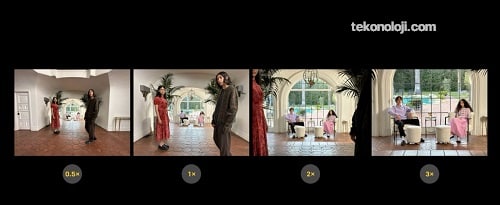
Technicalities aside, the result is an advantage of the iPhone 14 Pro over the iPhone 13 Pro; from the point of view of the visual perspective, we have finally returned to having the equivalent of a focal pitch of that prime lens that all photographers love on the iPhone. We will not be here to tell the mythology of the so-called “nifty 50”, but if the 3X of the iPhone 13 Pro had removed the possibility of having the frame closest to the perception of the human eye with the iPhone, this is back thanks to the iPhone 14 Pro.
Behind the 2X of the iPhone 14 Pro there is some machine learning work because the Bayer filter on the four pixels must be taken into account by the processor, but the quality of the 2X photo is not affected and is very good, both at night and in full light. We would say that it is completely identical to that of a 2X native shot via optics.
3X zoom, wide angle and macro
Apple has also worked on two other focal lengths: 3X and 0.50X, improving them and, only on the super wide angle, increasing the size of the sensor. Both lenses, even if there is nothing you will rush to call home for, are superior.
This appears especially true on the 3X zoom. Although the sensor remains the same, in our tests we have collected several images that demonstrate that there is more tonal precision and better detail rendering. Plus they also have warmer shades.
On the shot with the wide angle and the macro shot (which use the same sensor) the differences are, we would say, almost necessarily. In fact, we have a new component and an increase in openness. In fact the photos are more detailed and even here with better colors.
We only add that the decrease in the minimum distance at which the main lens is in focus (rising, according to Halide Camera from 15 to 20 cm) will cause the ultrawide focal length and therefore the Macro to intervene more frequently. So if you don’t like the recomposition of the image that follows, resign yourself to having it around often or turn it off.
48 megapixel shooting
We said above that despite the sensor still capturing 12 megapixel photos in JPEG despite being technically a 48 megapixel sensor. There is no possibility (probably to maintain compatibility with third-party applications) of having 48 megapixel JPEG photos but it is possible to have the native format by shooting in ProRes, the RAW of the iPhone.
This is an important option for those wishing to take advantage of the iPhone camera in a very advanced way, but confined to very specific and limited cases; for most iPhone buyers taking a ProRes photo is disadvantageous. The photos are almost constantly above 25 MB but can reach 80 MB and therefore are not immediately usable. Secondly, to get the most out of a photo in ProRes you have to work a lot with specialized applications like Lightroom, which is certainly not something everyone does.
The fact that iPhone is technically able thanks to the new sensor to take 48 megapixel photos is, however, an aspect to be taken into great consideration in a future key. Although photo resolution, at least to some extent, is a false myth, having a larger sensor will allow Apple to build important things, taking advantage of computational photography or just sensor size, which it has already done, such as mentioned above, reintroducing the 2x shot.
The new Flash
Apple has also improved the Flash, it now has nine LEDs that are used to change the lighting of the subject dynamically depending on the shot: they project a concentrated beam of light if you need to frame a specific element or a face or if you use the telephoto lens, or illuminate a large area up to the edges of the frame if there is a group of people. At the time of writing we have not done specific tests, so we cannot say if there really are practical advantages of this new component.
The front camera
The selfie camera has been updated. Now it is no longer fixed focus but variable. It should improve the quality of the shot. Probably in some situations this is true, but the difference between an iPhone 13 Pro and an iPhone 14 Pro is not perceptible on average.
New portrait mode
iPhone 14 Pro also has a new portrait mode: it can now distinguish what’s in the foreground and what’s in the background and blur both elements, leaving the main subject in the middle in focus. The effect is quite good even if you have to be quite careful not to overdo the focal length or not to get too close to the foreground part because the risk is to end up with unnatural images.
Video
We don’t have enough expertise to thoroughly test iPhone as a video camera, and again we didn’t. We limit ourselves to saying that there are only two substantial differences in the iPhone 14 Pro compared to the iPhone 13 Pro
Action Mode
The first is Action Mode, a new stabilization system that promises to make you forget the gimbals. The operation is promising pity that it requires perfect lighting and that it is not able to provide movies in 4K but is limited to 2.8K. In addition, there is a massive cropping of the frame, the way in which the image processor stabilizes the shot via software.
The natural zoom
Previously, zooming into video mode would brutally switch the frame from one enlargement to another. Now there is a smoother transition thanks to a process that merges frames via software. The effect is pleasant and credible even if you can still notice it in the jump, however minimal.
The A16 processor
Apple introduces a new processor in the iPhone 14 Pro: A16. The component is different from A15 (4 nanometer circuitry against the 5 nanometer of the previous CPU) but structurally the differences could be few as the fact that the cores remain the same (six for computation and 16 for the neural engine) says. We do not yet know how much RAM is or how many and where the optimizations for the image processor are but certainly there are, given the novelties of the camera.
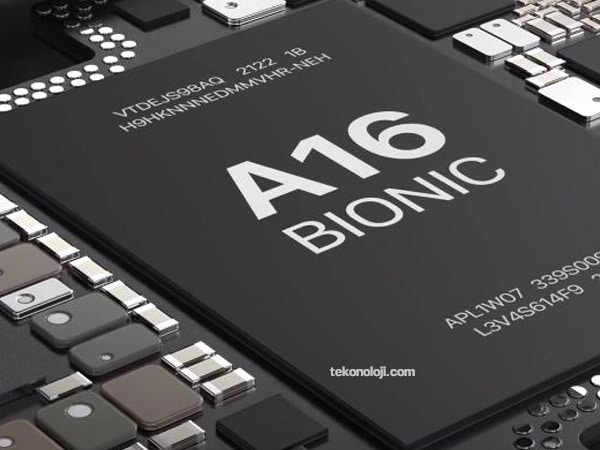
If we talk about performance from our tests we see an increase of about 13% in the multicore test and less than 10% in the single core. iPhone 14 Pro is therefore technically faster than an iPhone 13 Pro. In fact, the interface seems slightly smoother and application management more agile. Games are likely to be faster too. However, that this makes some difference in everyday life is not true. As always in the experience of using an iPhone, many other things count much more, some of which we have listed above.
Incident detection
Apple has put technology in the new iPhones that allows iPhones to detect when you are involved in a serious traffic accident and make an automatic emergency call. Even though the system is very sophisticated, to understand how it works just think of fall detection on Apple Watch. When a situation is identified that, according to gyroscope, accelerometer, GPS, microphone and barometer, resembles a serious accident, iPhone displays an alert. If within ten seconds the message is not dismissed by the user, a call to 112 from Siri starts.
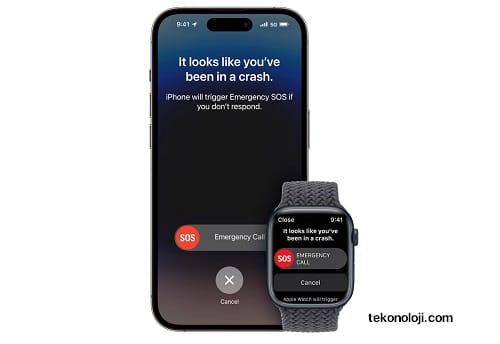
The function was essentially created for markets other than the European one because in EU countries all new cars already have eCall, a system that automatically and free of charge calls 112 if the vehicle is involved in a serious accident. The operation of eCall is similar to Incident Detection; its call includes the car’s location, time, but it also adds things iPhone can’t communicate such as the vehicle’s direction of travel, vehicle make, model and color, and even the type of bump (front, rear, rear or side) detected by the car’s sensors.
Emergency call via satellite
iPhone 14 Pro is capable of sending emergency messages via satellite. This is a feature that uses a network of low-orbit satellites to send emergency messages. As we explain elsewhere, we speak of a “message” and not a phone call. The system is not in fact able, for bandwidth reasons, to collect the voice and transmit it to the satellite.
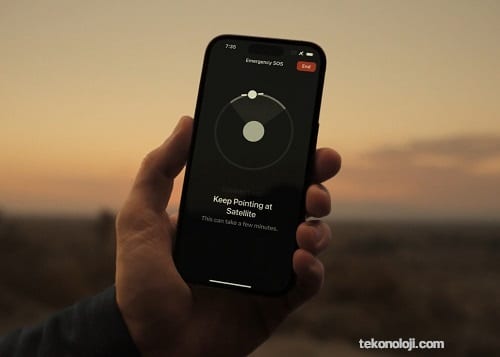
Emergency satellite messages will be available, for two years free, only in the United States and Canada starting in November. It remains to be seen when and if it will arrive in Europe and what interest it could have in our latitudes. With us, cellular coverage is much more widespread than that of North America and therefore minor connectivity problems.
However, this is a significant technical exercise if we consider the cost and complexity of a satellite phone, a system that once evolved and refined could make the iPhone a universal communication system capable of revolutionizing the way of communicating, even surpassing even the need for cell phone networks.
Battery and charging
iPhone 14 Pro has a marginally larger battery than the iPhone 13 Pro. Apple presents the new model with an autonomy almost identical to that of the previous model except for an extra hour in video playback.
For charging, however, we read that the new generation iPhones absorb up to 27W. When this happens, how it happens and (above all) what advantages it brings is to be verified. We carried out a test by recharging iPhone 14 Pro and iPhone 13 Pro with a 45W charger and without appreciable differences: both reached around 55% in half an hour and fully charged in about 100 minutes.
Prices and availability
Apple for the first time in several years has significantly increased the price of the iPhone 14 Pro compared to its predecessor: we are talking about an increase between 13 and 15%. This is the effect of the value of the dollar, which has increased in recent months because the dollar price in the US has remained unchanged.
In Italy iPhone 14 Pro inches starts at 1,339 euros (150 euros more than iPhone 13 Pro), while iPhone 14 Pro Max starts from 1,489 euros (iPhone 13 Pro Max cost 1249 €). It should be noted that an iPhone 14 Pro Max in its top configuration with 1 TB of memory costs 2,139 euros 1869, 270 euros more than the iPhone 13 Pro Max. The 512 GB iPhone 14 Pro Max costs exactly the same as a MacBook Air with the same memory: € 1879.
iPhone 14 Pro and iPhone 14 Pro max at the time of writing can be purchased on the Apple Store and at all Apple authorized stores; if you buy online, shipping times are around a month and a half. Availability varies in stores. They are also on sale on Amazon with an identical price list to Apple’s and identical shipping times.
